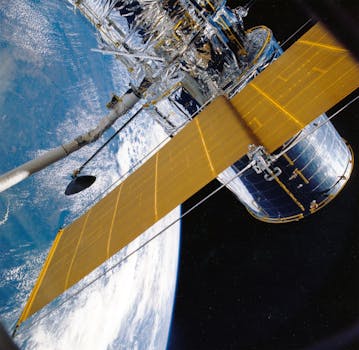Navigating the Skies: Insights into Recent Satellite Telecommunications Innovations

Navigating the Skies: Insights into Recent Satellite Telecommunications Innovations
Satellite telecommunications innovations have been at the forefront of the technological advancements in recent years. Navigating the skies, satellite telecommunications innovations have revolutionized the way we communicate and access information. With the increasing demand for global connectivity, satellite technology has become a vital component in providing internet access to remote and underserved areas.
The recent launch of low-earth orbit (LEO) satellites has marked a significant milestone in the satellite telecommunications industry. These satellites operate at an altitude of around 1,200 kilometers, which is much lower than the traditional geostationary orbit (GEO) satellites. The lower altitude of LEO satellites enables faster data transmission and lower latency, making them ideal for real-time communications and high-speed internet applications.
Advancements in Satellite Technology
Several companies, including SpaceX, OneWeb, and Amazon’s Kuiper Systems, are actively developing and launching LEO satellite constellations. These constellations consist of hundreds of satellites that work together to provide global coverage and high-speed internet connectivity. The development of LEO satellites has also led to advancements in satellite manufacturing and launch technologies, making it possible to produce and launch satellites at a lower cost and faster rate than ever before.
In addition to LEO satellites, there have been significant advancements in other areas of satellite technology, including satellite antennas, transceivers, and propulsion systems. The development of phased array antennas, for example, has enabled satellites to steer and shape their beams electronically, allowing for more efficient use of bandwidth and improved connectivity.
Impact on Global Connectivity
The impact of satellite telecommunications innovations on global connectivity has been significant. Satellite technology has enabled the provision of internet access to remote and underserved areas, bridging the digital divide and promoting economic development. Satellite-based connectivity has also become a vital component in disaster response and recovery efforts, providing critical communication services when traditional infrastructure is damaged or destroyed.
The use of satellite technology has also become increasingly important in the development of 5G networks. Satellite-based connectivity can provide a cost-effective and efficient way to extend 5G coverage to rural and remote areas, where the deployment of traditional cellular infrastructure may not be feasible. Furthermore, satellite technology can also be used to provide backhaul services, connecting cell towers and other infrastructure to the core network.
Challenges and Future Directions
Despite the significant advancements in satellite telecommunications innovations, there are still several challenges that need to be addressed. One of the major challenges is the issue of space debris, which poses a significant risk to the safety and sustainability of satellite operations. The development of sustainable and responsible satellite practices, including the use of de-orbiting technologies and collision avoidance systems, is essential to mitigate this risk.
Another challenge facing the satellite telecommunications industry is the need for regulatory frameworks that can keep pace with the rapid advancements in technology. The development of flexible and adaptive regulatory frameworks is essential to promote innovation and investment in the industry, while also ensuring that the benefits of satellite technology are shared equitably and that the risks are managed effectively.





